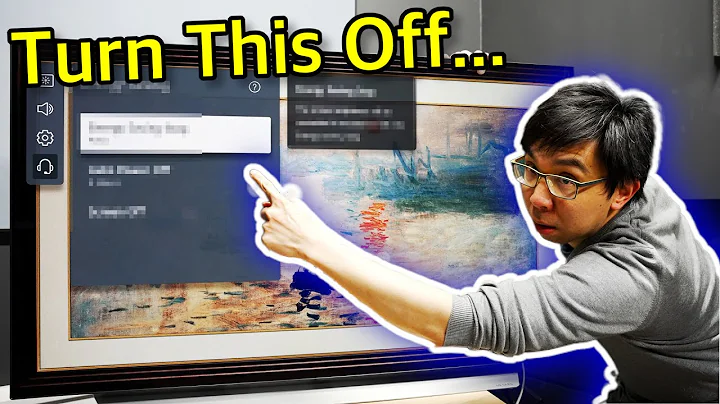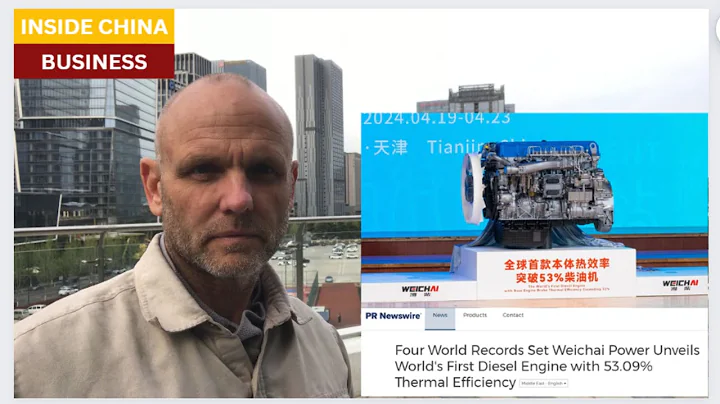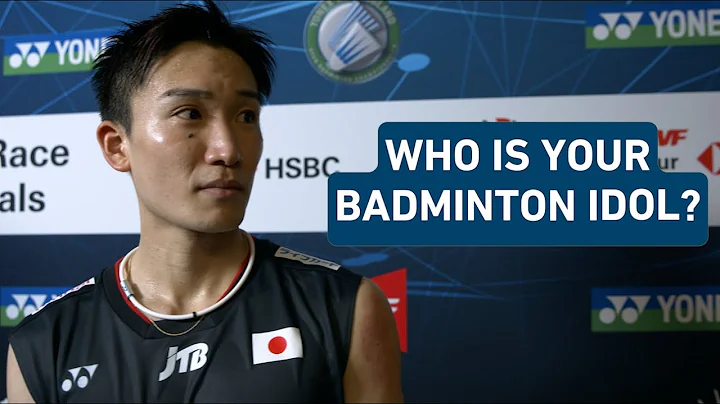Liang Zhenpeng/Text
[The author is a senior industrial economic observer and home appliance/IT/Internet industry analyst]
As market demand tends to be saturated, the color TV industry has entered a period of adjustment, and TV display technology has become the focus of many manufacturers. laser TV As the fourth generation display technology after black and white display, color display and digital display, is becoming the first choice for ultra-high-definition large screens with its advantages such as high cost performance, energy saving and environmental protection, healthy eye protection, and excellent image quality.
![Liang Zhenpeng/Text [The author is a senior industrial economic observer and home appliance/IT/Internet industry analyst] As market demand tends to be saturated, the color TV industry has entered a period of adjustment. TV display technology has become the focus of many manufactu - DayDayNews](https://cdn-dd.lujuba.top/img/loading.gif)
On September 19, 2019, more than 100 laser display upstream and downstream industry chain companies participated in the first "Global Laser Display Technology and Industrial Development Forum" to jointly discuss the development trend of the laser display industry. Enterprises in the entire industry chain at home and abroad will join forces Promote the development of laser TV market to further accelerate.
Super large-screen LCD TVs are expensive, have high power consumption, and are too bulky. Laser TVs are cost-effective, energy-saving, environmentally friendly, and have thin and light screens.
With the rapid development of China's TV field and the continuous improvement of people's living standards, more and more families are interested in large-screen TVs. The demand for screen TVs has become increasingly strong, and currently there are two mainstream display technologies: LCD TVs and laser TVs. However, in the field of ultra-large screens above 80 inches, LCD TVs are expensive, have high power consumption, and are too bulky.
compares two 100-inch TVs sold on JD.com, one is Sony 98-inch LCD TV KD-98Z9G, and the other is Hisense 100-inch laser TV L5.
From a price perspective, the Sony LCD TV is priced at 529,999 yuan, and the Hisense Laser TV is priced at 39,999 yuan. LCD TVs that cost hundreds of thousands are too expensive, and the price of Hisense Laser TV L5 is less than one-tenth of the Sony LCD TV, which is obviously very cost-effective.
In terms of power consumption, the power consumption of this Sony LCD TV is 1102W, and the power consumption of this Hisense Laser TV is 340W. The power consumption of laser TVs is only about one-third of that of LCD TVs of the same size, and as the efficiency of semiconductor lasers continues to improve, the power consumption of laser TVs will continue to decrease.
In terms of weight, this Sony LCD TV weighs 135.0kg; the weight of the Hisense Laser TV host + screen is only 37kg, less than 1/3 of the LCD TV. This is because the screen, chips, circuit boards and other components of the LCD TV are a whole. The larger the screen size, the bulkier the LCD TV will be. The screen of the laser TV is just a passive bionic screen with a simple structure, thinner and lighter. The weight of the main unit is still much lighter than an LCD TV of the same size.
learned through comparative analysis that laser TVs of the same size as LCD TVs not only have thinner screens and higher cost performance, but are also more energy-saving and environmentally friendly.
Laser TV outshines LCD TVs with its excellent eye protection function and picture quality
For home appliances, user experience determines product value. Laser TV better meets the needs of families in terms of user experience.
![Liang Zhenpeng/Text [The author is a senior industrial economic observer and home appliance/IT/Internet industry analyst] As market demand tends to be saturated, the color TV industry has entered a period of adjustment. TV display technology has become the focus of many manufactu - DayDayNews](https://cdn-dd.lujuba.top/img/loading.gif)
Due to different imaging principles, laser TV is more prominent in terms of healthy eye protection. The imaging principle of
LCD TV is "direct imaging". When users watch TV, light directly enters people's eyes. Coupled with factors such as the flickering of the LCD panel and changes in light and dark light, long-term viewing will cause eye fatigue, dryness, and eyelashes. The myopia muscles contract, leading to myopia.
laser TV is "diffuse reflection imaging", which simulates the principle of reflection imaging in nature. The picture is reflected by the screen and enters the human eye for imaging. It is as comfortable, healthy, natural and does not hurt the eyes as the natural scenery is reflected into the human eye under the sun. In contrast, laser TV is more conducive to protecting eye health. This function of
has also been confirmed through experiments. The Visual Health and Safety Protection Institute of the China Institute of Standardization conducted a visual health and comfort evaluation on Hisense Laser TV. The results showed that the visual comfort of laser TV is not only better than that of LCD TV, but also More than 20% better than paper reading.
At the same time, laser TVs have extremely high spectral purity, accurate colors, and are superior to LCD TVs in picture quality.
Liang Zhenpeng/Text
[The author is a senior industrial economic observer and home appliance/IT/Internet industry analyst]
As market demand tends to be saturated, the color TV industry has entered a period of adjustment, and TV display technology has become the focus of many manufacturers. laser TV As the fourth generation display technology after black and white display, color display and digital display, is becoming the first choice for ultra-high-definition large screens with its advantages such as high cost performance, energy saving and environmental protection, healthy eye protection, and excellent image quality.
![Liang Zhenpeng/Text [The author is a senior industrial economic observer and home appliance/IT/Internet industry analyst] As market demand tends to be saturated, the color TV industry has entered a period of adjustment. TV display technology has become the focus of many manufactu - DayDayNews](https://cdn-dd.lujuba.top/img/loading.gif)
On September 19, 2019, more than 100 laser display upstream and downstream industry chain companies participated in the first "Global Laser Display Technology and Industrial Development Forum" to jointly discuss the development trend of the laser display industry. Enterprises in the entire industry chain at home and abroad will join forces Promote the development of laser TV market to further accelerate.
Super large-screen LCD TVs are expensive, have high power consumption, and are too bulky. Laser TVs are cost-effective, energy-saving, environmentally friendly, and have thin and light screens.
With the rapid development of China's TV field and the continuous improvement of people's living standards, more and more families are interested in large-screen TVs. The demand for screen TVs has become increasingly strong, and currently there are two mainstream display technologies: LCD TVs and laser TVs. However, in the field of ultra-large screens above 80 inches, LCD TVs are expensive, have high power consumption, and are too bulky.
compares two 100-inch TVs sold on JD.com, one is Sony 98-inch LCD TV KD-98Z9G, and the other is Hisense 100-inch laser TV L5.
From a price perspective, the Sony LCD TV is priced at 529,999 yuan, and the Hisense Laser TV is priced at 39,999 yuan. LCD TVs that cost hundreds of thousands are too expensive, and the price of Hisense Laser TV L5 is less than one-tenth of the Sony LCD TV, which is obviously very cost-effective.
In terms of power consumption, the power consumption of this Sony LCD TV is 1102W, and the power consumption of this Hisense Laser TV is 340W. The power consumption of laser TVs is only about one-third of that of LCD TVs of the same size, and as the efficiency of semiconductor lasers continues to improve, the power consumption of laser TVs will continue to decrease.
In terms of weight, this Sony LCD TV weighs 135.0kg; the weight of the Hisense Laser TV host + screen is only 37kg, less than 1/3 of the LCD TV. This is because the screen, chips, circuit boards and other components of the LCD TV are a whole. The larger the screen size, the bulkier the LCD TV will be. The screen of the laser TV is just a passive bionic screen with a simple structure, thinner and lighter. The weight of the main unit is still much lighter than an LCD TV of the same size.
learned through comparative analysis that laser TVs of the same size as LCD TVs not only have thinner screens and higher cost performance, but are also more energy-saving and environmentally friendly.
Laser TV outshines LCD TVs with its excellent eye protection function and picture quality
For home appliances, user experience determines product value. Laser TV better meets the needs of families in terms of user experience.
![Liang Zhenpeng/Text [The author is a senior industrial economic observer and home appliance/IT/Internet industry analyst] As market demand tends to be saturated, the color TV industry has entered a period of adjustment. TV display technology has become the focus of many manufactu - DayDayNews](https://cdn-dd.lujuba.top/img/loading.gif)
Due to different imaging principles, laser TV is more prominent in terms of healthy eye protection. The imaging principle of
LCD TV is "direct imaging". When users watch TV, light directly enters people's eyes. Coupled with factors such as the flickering of the LCD panel and changes in light and dark light, long-term viewing will cause eye fatigue, dryness, and eyelashes. The myopia muscles contract, leading to myopia.
laser TV is "diffuse reflection imaging", which simulates the principle of reflection imaging in nature. The picture is reflected by the screen and enters the human eye for imaging. It is as comfortable, healthy, natural and does not hurt the eyes as the natural scenery is reflected into the human eye under the sun. In contrast, laser TV is more conducive to protecting eye health. This function of
has also been confirmed through experiments. The Visual Health and Safety Protection Institute of the China Institute of Standardization conducted a visual health and comfort evaluation on Hisense Laser TV. The results showed that the visual comfort of laser TV is not only better than that of LCD TV, but also More than 20% better than paper reading.
At the same time, laser TVs have extremely high spectral purity, accurate colors, and are superior to LCD TVs in picture quality.
Today, laser display has entered the 4K era from the 2K era, and is slowly moving closer to the 8K era. The light source has also developed from single color to three colors. Laser display terminals have reduced the loss of colors that can be seen by the human eye. Among them, Through core technological innovations such as laser light source modules, laser optical machines, and ultra-short throw laser projection systems, Hisense has solved industry technical problems such as light attenuation and color purity in laser TV applications, and achieved high-definition, pure-color laser displays. .
In addition, the peak brightness of Hisense Laser TV 80-inch L5 can reach 400nit, and the 100-inch L7 can reach 360nit. It has excellent resistance to ambient light. Even if you open the curtains during the day or turn on the lights at night, the picture quality will still be clear. Influence.
In terms of user experience, laser TVs completely surpass LCD TVs with their excellent eye protection functions and picture quality.
The entire industry chain at home and abroad jointly participated to jointly expand the laser TV market pie
With the rapid development of the laser TV market, on September 19, enterprises from the entire industry chain at home and abroad jointly participated in the first "Global Laser Display Technology and Industry Development Forum" , want to join forces to make the laser TV market bigger.
![Liang Zhenpeng/Text [The author is a senior industrial economic observer and home appliance/IT/Internet industry analyst] As market demand tends to be saturated, the color TV industry has entered a period of adjustment. TV display technology has become the focus of many manufactu - DayDayNews](https://cdn-dd.lujuba.top/img/loading.gif)
Among them, Texas Instruments , Japan's Ricoh Optical, Nichia Chemical and Dainippon Printing, the four core overseas laser TV suppliers, have joined the laser TV promotion camp and all gave keynote speeches at the forum. Ane Sacks, vice president of Texas Instruments (TI), a laser display chip company, said that laser TVs using DLP technology are very aesthetically pleasing, taking full advantage of the ultra-large screen and high definition of laser TVs, and the colors are highly saturated. , the color gamut is very wide, and combining DLP chip products with laser display technology can further promote innovation in the future display industry. The laser TV industry requires multiple efforts to expand. I believe laser TV is a field with high growth potential. Texas Instruments will continue to evolve in terms of high brightness and low energy consumption.
In addition to overseas suppliers, Xinding Micro Optoelectronics (semiconductor chips), Medite Optics (high-quality molded aspherical and free-form lenses), Yipu Optoelectronics (precision optics), Yangzhou Jixin Optoelectronics (laser display and laser lighting) , Nanyang Lida Optoelectronics (High Precision Optics) and other domestic laser display upstream supplier companies also displayed related products at the "Global Laser Display Technology and Industry Development Forum". At present, Chinese local companies can produce most of the core components in the upstream laser TV industry chain independently.
Following LCD TV, the next generation display technology in the color TV industry is divided into two major technical schools: laser TV and OLED TV. From the perspective of industrial safety, only one supplier of OLED TV panels in the world, South Korea's LGD, is capable of commercial mass production. For China's color TV industry, this is tantamount to being controlled by others; while Chinese companies have independently developed and mastered the major aspects of laser TV. In some upstream core industrial chains, it is relatively easier to develop laser TV and gain the right to speak in the industry.
In addition, Hisense, Changhong, Jimi, PPTV, China Hualu, Shenzhen Guangfeng, Zhongke Jiguang and other complete laser TV companies also displayed related laser TV products at the forum, including Hisense 4K Laser TV L5 ( 80 inches, 100 inches) and L9 (100 inches), Changhong Laser TV C7UG and C5U, PPTV Laser TV MAX2, Hualu Laser TV RGB-X1, Fengmi Laser TV cinema, etc.
Among them, Hisense, as a company that has been deeply involved in the laser TV field for many years, not only has strong technological accumulation in complete machine manufacturing, but also masters key technologies in upstream core components such as laser light source technology and optical engines through independent innovation, which can Achieve all independent production from components to complete machines, and also achieve full-size coverage of 80-150-inch laser products.
Suning, JD.com, Gome and other downstream retail channels are actively promoting, and the laser TV market has grown rapidly
For the laser TV industry, in order to accelerate development, in addition to upstream core component manufacturers and midstream complete machine manufacturers, downstream retail channel operators He also shoulders a heavy responsibility.
html On September 19, more than 50 laser display product channel vendors, including Suning Appliances, Gome Electrical Appliances, and JD.com, participated in the first "Global Laser Display Technology and Industry Development Forum."Driven by the joint efforts of enterprises across the entire industry chain, laser TV has been recognized by consumers and the market and has achieved gratifying results.Judging from the Baidu search index, the daily average mobile value of Laser TV has reached 779, and the overall daily average value has reached 1094. Compared with other technical products, it has a leading advantage.
According to statistics from AVC Revo, in the first half of 2019, China’s laser TV market sold 87,000 units, a year-on-year increase of 40.3%; sales were 1.75 billion yuan, a year-on-year increase of 31.0%.
Among them, it can be seen from Suning's sales data that the sales proportion of large-screen laser TVs of 80 inches and above has increased from 23% in 2017 to 63.5% in 2019, and the sales amount has increased from 18.8% in 2017. %, rising to 57.3% in 2019. In addition, Hisense 80-inch laser TV L5 has not only won the championship in the 10,000 yuan market since its launch in May 2018, but also has a user praise rate of 99%.
In addition, JD.com has also been paying close attention to the product sales of laser TV manufacturers since 2016. The sales of laser TVs of major brands on the platform have far exceeded JD.com’s sales expectations.
In 2017, Gome also joined hands with Hisense to build the country's first 4K laser TV flagship experience store in Qingdao, integrating Hisense's 80-inch, 88-inch, 100-inch, 150-inch and other laser TV series products into various scenarios such as living rooms, home theaters, office meetings, etc. The integration of applications is also a new attempt by Gome stores in the field of laser TV.
Today, driven by the joint efforts of upstream core component manufacturers, midstream complete machine manufacturers, and downstream retailers, laser TV has become the fastest growing category in the color TV market. According to data from Zhongyikang, from 2017 to 2022, The compound annual growth rate of laser TV market sales will reach 92%.
laser TV has achieved rapid growth in the field of ultra-large screens by virtue of its advantages of healthy eye protection, energy saving and environmental protection, excellent picture quality, and high cost performance. Moreover, with the joint efforts of enterprises in the entire industry chain, the laser display industry will become a major player on par with the LCD industry. Global display industry.
Driven by the joint efforts of enterprises across the entire industry chain, laser TV has been recognized by consumers and the market and has achieved gratifying results.Judging from the Baidu search index, the daily average mobile value of Laser TV has reached 779, and the overall daily average value has reached 1094. Compared with other technical products, it has a leading advantage.
According to statistics from AVC Revo, in the first half of 2019, China’s laser TV market sold 87,000 units, a year-on-year increase of 40.3%; sales were 1.75 billion yuan, a year-on-year increase of 31.0%.
Among them, it can be seen from Suning's sales data that the sales proportion of large-screen laser TVs of 80 inches and above has increased from 23% in 2017 to 63.5% in 2019, and the sales amount has increased from 18.8% in 2017. %, rising to 57.3% in 2019. In addition, Hisense 80-inch laser TV L5 has not only won the championship in the 10,000 yuan market since its launch in May 2018, but also has a user praise rate of 99%.
In addition, JD.com has also been paying close attention to the product sales of laser TV manufacturers since 2016. The sales of laser TVs of major brands on the platform have far exceeded JD.com’s sales expectations.
In 2017, Gome also joined hands with Hisense to build the country's first 4K laser TV flagship experience store in Qingdao, integrating Hisense's 80-inch, 88-inch, 100-inch, 150-inch and other laser TV series products into various scenarios such as living rooms, home theaters, office meetings, etc. The integration of applications is also a new attempt by Gome stores in the field of laser TV.
Today, driven by the joint efforts of upstream core component manufacturers, midstream complete machine manufacturers, and downstream retailers, laser TV has become the fastest growing category in the color TV market. According to data from Zhongyikang, from 2017 to 2022, The compound annual growth rate of laser TV market sales will reach 92%.
laser TV has achieved rapid growth in the field of ultra-large screens by virtue of its advantages of healthy eye protection, energy saving and environmental protection, excellent picture quality, and high cost performance. Moreover, with the joint efforts of enterprises in the entire industry chain, the laser display industry will become a major player on par with the LCD industry. Global display industry.





















